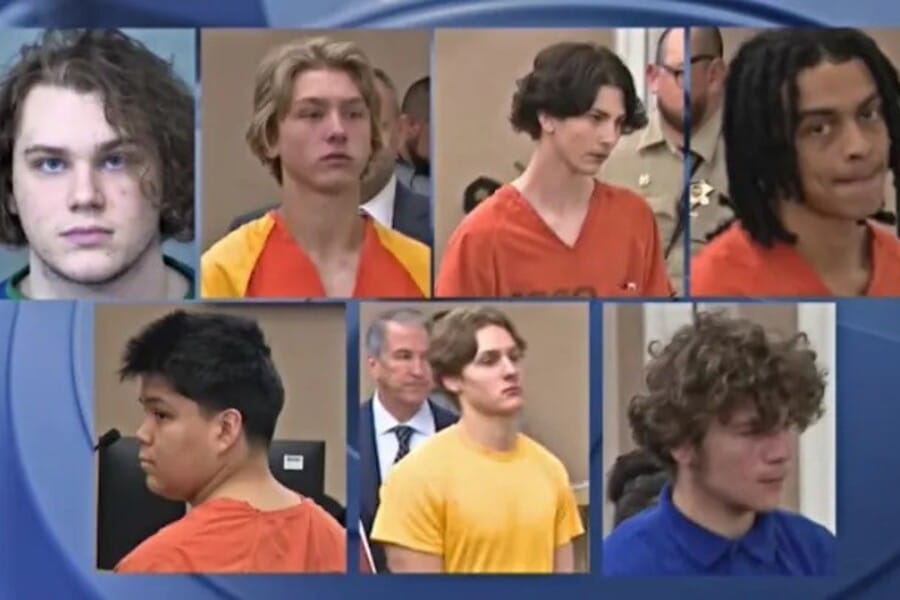
The Queen Creek tragedy pierces the veil on a disturbing trend: the entanglement of youth violence with the protective sheath of affluence. This case, spotlighting the alleged actions of the “Gilbert Goons” and their attempts to navigate the aftermath of a heinous crime, underscores a broader societal concern.
It raises uncomfortable questions about the extent to which wealth can influence justice and whether societal status affords a dangerous level of impunity. The implications are profound, touching on the foundational principles of equality before the law and the moral fabric of communities.
When parents, entrusted with guiding their offspring towards ethical conduct, are implicated in concealing their children’s crimes, it forces a reevaluation of societal values and priorities. This scenario challenges communities to confront the realities of privilege, the responsibilities of parenting in affluent contexts, and the urgent need for systemic reforms to ensure that justice is blind to social and economic status, holding all individuals accountable for their actions equally.
The Incident
The tragic demise of Preston Lord, resulting from a merciless assault, casts a stark light on the disturbing dynamics at play among the involved teenagers. This incident wasn’t a spur-of-the-moment act of violence but appeared to be a calculated attack, pointing to a chilling degree of intention and malice.
The assailants, a group of seven teenagers whose ages range from 17 to 20, are now entangled in a complex legal quagmire, facing charges that echo the seriousness of their alleged actions. Beyond the primary accusation of first-degree murder, they are confronted with kidnapping charges, and a subset faces allegations of aggravated robbery, adding layers to their purported criminal conduct.
The defendants’ collective plea of not guilty, notwithstanding the gravity of the charges, sets a contentious tone for the ensuing legal proceedings. With each being held on a $1 million bond, the case not only garners the attention of the immediate community in Queen Creek but also sparks a wider public and media fascination.
This heightened scrutiny reflects a society grappling with the ramifications of youth violence, the intricacies of the justice system, and the broader implications of such grave incidents on community safety and trust.
As this legal drama unfolds, the public watches with bated breath, anticipating the trial’s outcomes and seeking justice for Preston Lord, whose life was so abruptly and tragically curtailed. This case serves as a somber reminder of the potential for darkness in youth, challenging communities to reflect on prevention, justice, and rehabilitation.
Allegations of Parental Involvement
At the heart of the unfolding drama lies the troubling accusation that certain parents, buoyed by their affluence, may have engaged in efforts to shield their offspring from legal accountability. The spotlight has intensely focused on the Renner family, whose ownership of a successful fitness franchise is believed to have provided them with the means to navigate the aftermath of the crime strategically.
Their immediate recourse to legal advice following the incident suggests a calculated approach to mitigate potential legal repercussions for their son. This strategy extended to the physical removal of their child to a secluded cabin, a move purportedly aimed at allowing injuries—possible incriminating evidence—to heal undetected.
Such actions bring to the fore critical ethical considerations about the extent of parental protection in the face of serious allegations. It prompts a societal reflection on the balance between a parent’s instinct to protect their child and the imperative to uphold justice and moral accountability, especially when such actions may inadvertently perpetuate a cycle of impunity and undermine the foundational principles of justice and equality.
Community and School Response
The involvement of Talan Renner in a high school football game amidst ongoing investigations into his alleged involvement in Lord’s death has stirred controversy.
This decision by American Leadership Academy (ALA) Gilbert North, which came to light despite the circulating rumors and subsequent celebratory recognition of Renner as the player of the game, underscores a potentially dangerous disconnect between alleged criminal activities and community acknowledgment or sanctions.
The school’s later actions to distance itself from the accused and to terminate the football coach were seen by many as delayed but necessary steps towards accountability.
Societal Implications
The grim narrative surrounding Preston Lord’s murder reveals a stark intersection of youth violence with socioeconomic disparities, igniting a societal debate that transcends the immediate legal battle.
The possibility that wealth can act as a barrier against legal repercussions not only challenges the integrity of the justice system but also raises profound concerns about the broader societal implications. This case becomes a catalyst for examining the deep-rooted issues of equity and fairness within our legal frameworks, spotlighting the urgent need for systemic reforms to ensure justice serves all, irrespective of one’s economic standing.
Moreover, the involvement of affluent parents in potentially obstructing justice underscores a worrying trend: the transmission of questionable ethical values to the younger generation. It beckons a critical reflection on the moral compass we are setting for future leaders, emphasizing the pivotal role of ethical education and accountability in shaping a society that upholds justice and equality as its cornerstones.
Legal and Ethical Considerations
The legal proceedings of this case are being closely watched, not just for their outcome but for what they reveal about the justice system’s handling of crimes involving affluent youths. The charges laid out are severe, reflecting the gravity of the crime committed. Yet, the pleas of not guilty and the strategies employed by the defense may offer insights into how wealth and privilege can be leveraged within the legal framework.
The ethical considerations are equally significant. The actions of the parents, as alleged, raise ethical questions about the lengths to which individuals will go to protect their loved ones, even in the face of heinous crimes. It also highlights the moral quandaries faced by communities in addressing such incidents — balancing the desire for justice with the complexities of societal and familial ties.
As the case unfolds, it serves as a somber reminder of the challenges facing contemporary society in addressing youth violence, the influence of socioeconomic factors on justice, and the ethical responsibilities of individuals and communities. The tragic loss of Preston Lord has galvanized a community, and indeed, a nation, to reflect on these pressing issues.
The legal process, now in motion, represents not just a quest for justice for Preston but also a test of the justice system’s impartiality and efficacy. As the community of Queen Creek and observers nationwide await the outcome, the hope is that this case will catalyze meaningful discussions and actions aimed at preventing such tragedies in the future and ensuring that justice is accessible to all, regardless of socioeconomic status.
In memory of Preston Lord, the response from his parents, calling for accountability and justice, resonates as a poignant call to action. It is a reminder of the enduring strength of parental love and the universal desire for a just and equitable society. As this case progresses through the legal system, it will undoubtedly continue to spark debate, inspire advocacy, and, it is hoped, lead to reforms that ensure a safer, more just future for all youths.
The murder of Preston Lord and the ensuing allegations against the “Gilbert Goons” and their families highlight critical societal, legal, and ethical questions. As the case unfolds, it remains a poignant reminder of the work that lies ahead in addressing the intertwined issues of youth violence, privilege, and justice.





